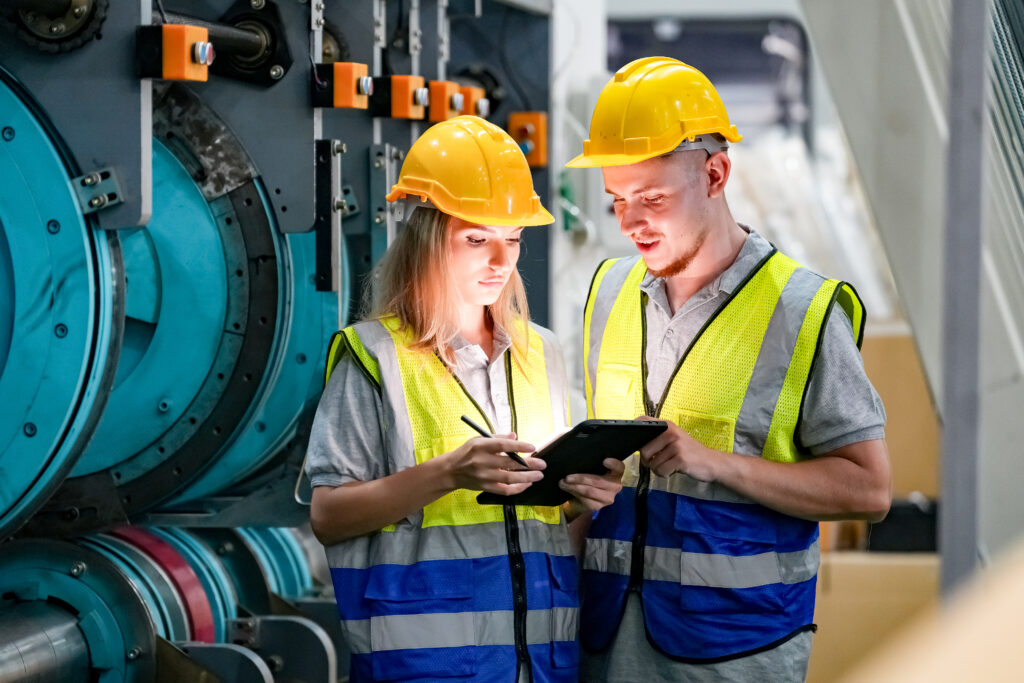As the oil and gas industry continues to evolve, so does the need for innovative training methods. One such innovation is the use of virtual reality (VR) for training oilfield workers. This technology, when combined with the power of digital workflow procedure builders like FAT FINGER, can revolutionize the way oilfield workers are trained, ensuring they perform their work correctly every time.
The Power of Virtual Reality in Training
Virtual reality provides a safe and controlled environment for oilfield workers to learn and practice their skills. It allows them to experience real-life scenarios without the associated risks, making it an ideal training tool for high-risk industries like oil and gas.
10 Benefits of Virtual Reality Training
By using VR in training, industries such as oil and gas, manufacturing, and mining, can benefit in the following ways:
1. Immersive Learning Experience: Virtual reality training offers an immersive learning experience, allowing learners to explore different environments and scenarios in a safe and controlled setting. This increases engagement and knowledge retention. VR training has been shown to improve learning retention by up to 75% compared to traditional methods.
2. Cost-Effective: VR training can be more cost-effective in the long run as it reduces the need for physical resources, travel expenses, and venue hire. Once created, VR training modules can be reused multiple times.
3. Safety: VR training is particularly beneficial in high-risk industries like healthcare, aviation, and construction, where mistakes can have severe consequences. Trainees can learn and make mistakes in a virtual environment without any real-world harm.

4. Realistic Scenarios: VR can simulate real-world scenarios that would be difficult or impossible to recreate in a traditional training setting. This helps learners gain practical experience and improve their problem-solving skills.
5. Customizable: VR training programs can be tailored to meet specific learning objectives, and can be adapted to suit different learning styles and paces.
6. Accessibility: VR training can be accessed from anywhere, making it ideal for remote learning or geographically dispersed teams. This makes it the perfect tool to train your field workers while on the job.
7. Enhances Collaboration: Some VR training programs allow multiple users to interact in the same virtual space, promoting teamwork and collaboration.
8. Instant Feedback: VR training can provide instant feedback, allowing learners to correct mistakes and reinforce learning immediately.
9. Motivating: The interactive and gamified nature of VR can make training more enjoyable and motivating, increasing learner participation and completion rates.
10. Improved Measurement: VR training programs can track a wide range of user actions, providing detailed data on learner performance and progress. This can help identify areas for improvement and measure the effectiveness of the training.
How FAT FINGER Complements VR Training

FAT FINGER can be used in conjunction with VR training to further enhance the learning experience. For example, workers can use FAT FINGER’s digital workflows and checklists during their VR training sessions to practice their tasks in a simulated environment. This combination of VR and digital workflow tools can significantly improve the effectiveness of training programs. across the following safety, operations and maintenance areas:
- Safety: Take 5 Safety, Near miss reporting, JSA / JHA, Risk Assessment, Incident reporting, Journey report
- Operations: Material Inspection, Quality Control, Shift Handover, Facility inspection / Production rounds, Line Changeover, Field ticket
- Maintenance: Work Order Checklist, Truck inspection checks, Mobile Asset Inspection, Shutdown / Turnaround form, Preventive maintenance inspection, Predictive Maintenance
Conclusion
Virtual reality training, when combined with digital workflow tools like FAT FINGER, can revolutionize the way oilfield workers are trained. It not only improves safety and learning retention but also reduces training costs. As the oil and gas industry continues to evolve, embracing these innovative training methods will be key to staying competitive.
Ready to take your oilfield worker training to the next level? Sign up for FAT FINGER or request a demo today!


